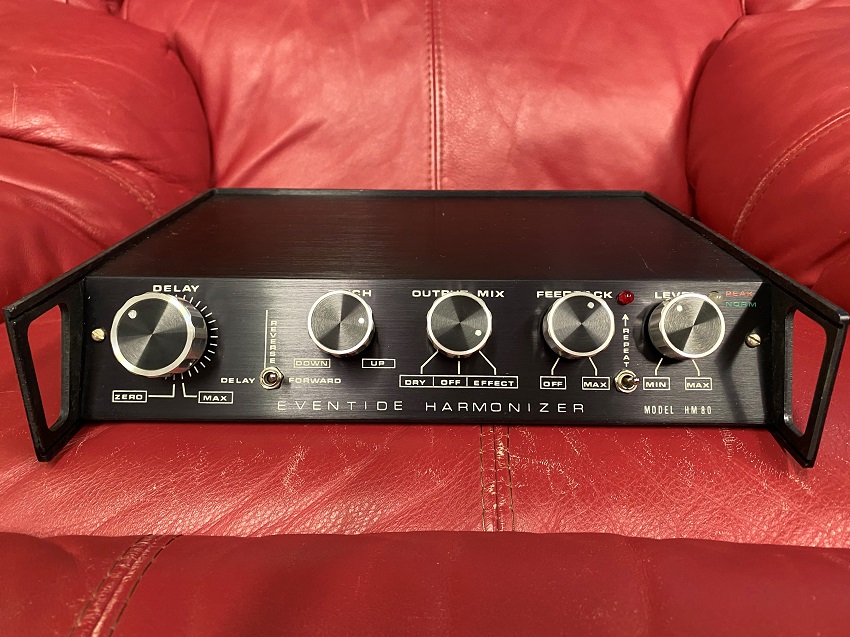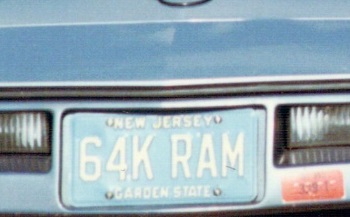A Walk Down Half-Memory Lane
It Could Have Been More Cryptic
The title could have been "A Chocolate Walk Down Half-Memory Lane When the CB Craze Was Done."
I also have a lot of full memory lanes down which to "walk," and I'm going to try to be more diligent in committing blog than I've been in the last year. Soon we'll know if I've succeeded. But half-memories have a place, too.
50th Anniversary!
The company at which I strive, Eventide Inc., has been extant for 50 years, almost to the day. That imbues us with history, and most of our early history is things called "products." Yes, in those days tech companies made "things" instead of apps or other persuasions of intangible computer code. Our things were made of the chemical elements, of which there were somewhat fewer then. Among these elements was Silicon, and it was Good. Using newfangled "integrated circuits," now called "chips," we made, inter alia, products for recording studios and broadcasters. And, almost by accident, we made a product for musicians! This is the story of that product.
It does involve half-memories.
The HM80 "Baby Harmonizer"
We have been devoting a lot of effort in our 50th year to creating a "Time Line" of our products. Until the HM80, all of our products were of the "rack-mount" persuasion. They were rigorously 19-inches wide to fit in standard studio-equipment racks. They were vertically quantized in 1-3/4 inch units with mounting holes placed in precise relation to their control panels. And they, too, were Good. The first of our Harmonizer® special effects units, the model H910, sold many thousands for the now-equivalent price of nearly $10,000 each. The two-year-later model, the H949, was even more feature-laden and more expensive. But what about performing musicians? Should they be deprived of the manifold benefits of pitch change and delay? No!
At least that's what I was thinking (in part) when I galumphed forth from our modest office, then in New York City, on my Saturday morning tour of midtown-Manhattan's chocolate vendors. Kron! Perugina! Manon! Lindt! (The other part of my thoughts had to do with listening to bats. With pitch-change technology, I reasoned*, we should be able to bring their high-frequency acoustic radar into the range of human hearing. But I digress.) Musicians were no more a prosperous lot in the '70s than they are now. If we were going to make an affordable digital-effects product that could be used on stage, it had to be cheap, rugged, less unwieldy than our other products, enticing, and cheap. Clearly, at least one priority was twice as important as the others.
Cheap: The Priority
Until recently, for reasons on which I'm not authorized to publicly ruminate, I've been a very thrifty person. In the Eventide Early Years, I was especially good at it. One reason each Instant Phaser sounded different from its conspecifics is that I could never find a reliable source of same-value capacitors without paying full distributor pricing. 'Nuff said about that. By haunting the surplus stores in the New York City area, I was often able to obtain remarkable bargains in hardware and components for producing our equipment. For example, the power transformer for our early delay lines was this wonderfully robust, reliable, and versatile military-surplus tar-potted brick bought for pennies on the dollar. Even our AC power cords were "special."

Enticing was a pretty important priority, too. One Eventide distinction—what we called "The Knob"—was featured on our rack-mount products, and it cost us about $5. We felt that it enhanced what is now called "look and feel" and, being on the front panel, it was worth it. But how could we support that kind of cost on a product with five knobs of solid aluminum, brushed metal inserts, and, as a lagniappe, a white dot for orientation? So you don't have to peek ahead, the answer was Citizens Band Radio. As the HM80 was being designed, CB was dying. Edlie, my favorite Long Island surplus emporium, was the beneficiary of the demise of Hy-Gain, an old-line radio and antenna manufacturer that overestimated the staying power of the Breaker-19 syndrome. $5 knobs, brand new and in their original compartmented boxes, were suddenly five cents. Hallelujah, an affordable front panel!
What About Innards?
Yes, there's more to a product than the front panel, and here's where the cryptic blog title almost makes sense. One of the biggest expenses in a number of our products was the audio digital-storage memory price. From the very first shift-register delay line to almost the present day, memory chip prices defined the economical and sometimes even the possible. Memory prices at the time were prohibitive. (Even earlier, they were as much as a dollar per byte!) At least they were hard to manufacture and often hard to get. Enter memory manufacturer Mostek, who was selling half-memories at much less than half-price. To find your data in a memory chip, you must give it the "address" which defines its location with the digital state of a number of address lines. If one of these address lines points to bad data, the chip would normally be useless. But we had a relationship with Mostek, and they asked if we could use chips with the most significant address line inoperable. Could we ever! By sacrificing half the memory capacity, we saved about 90% of the cost. Suddenly, we could afford to sell a delay line to real people and not just to flush corporations.
The rest of the innards were on two printed circuit boards, relatively undistinguished in their technology. Although the HM80 made ineluctable compromises in audio quality and bandwidth, it filled a need and our coffers**, and was unique in that it was the first digital product designed for the performing musician. If you're reading this flashback on the Eventide site, you'll find additional information, pictures, and interviews from the folks who performed with the HM80 in the 1970s.
So What Did the HM80 Do?
The panel says it all, and the manual says even more. In addition to the usual delay and pitch change functions, it did time reversal, repeat (looping), and feedback. All for less than half the price of the H910 or a quarter of the H949. Although I suspect its price-per-pound was higher than either. While it wasn't an enormous seller as were those two studio products, it almost made it up to a thousand units before we ran out of knobs or customers, I'm not sure which. And it paid for a lot of subsequent chocolate walks.
An expanded version of this blogitem with videos, interviews, and even a poll, see it on the Eventide web site.
Flashback Flashforward
Memory was largely responsible for Eventide's prosperity in the '70s and '80s. It even paid for this car. A future blog will tell the tale of our Hewlett-Packard-Compatible memory boards, one of my favorite products and a nonpareil boondoggle. But not yet. |
 |
* Reasoning? I suppose back then I must have.
** First zeugma of the year!


